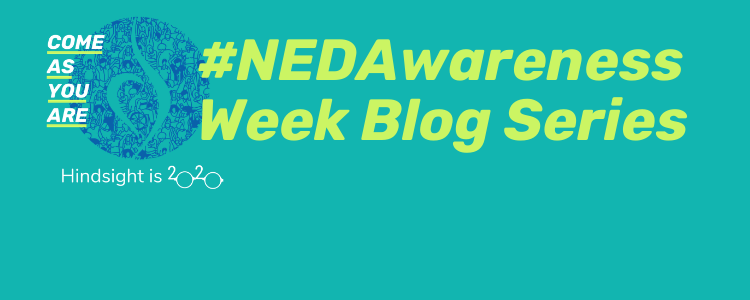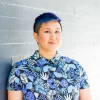I Found My Professional Home in Trans Health
Like most people who received graduate training in psychology, I received limited information about eating disorders. I was taught that eating disorders afflicted only white, college-educated, cisgender, straight women. My experience told a different story—I was wrestling with my own eating disorder, one in which I was preoccupied with restriction, nutrition, and exercise, but did not meet full criteria for any diagnoses in the DSM. The disconnect I felt between my professional training and my own lived experience—the fact that I didn’t fit the mold of what an eating disordered person was “supposed to” look and behave like—is perhaps what led me to intellectualize my struggles. I chose to focus my dissertation research on eating disorders in communities of color.
While all this was happening, including the beginnings of my eating disorders recovery, I was coming into my genderqueer identity. It was an exciting time in San Francisco, and I found freedom and community in many respects. Through political performance art, I found myself and other people who, like me, were re-imagining and claiming their own genders and sexualities outside of cisgender, heterosexual, and largely Western/white norms. Still, at that time, it was rare for me to find any professors or colleagues who could even engage in a simple conversation about gender identity, let alone identities that did not fit into the gender binary. I don’t think I had the capacity at that time to draw attention to what I sensed deep down: that there really was a connection between my eating disorder and my gender nonconformity. And if that was the case for me, maybe it was the case for others, too.
Fast forward to being well established as a psychologist. Though I’d completed my dissertation on eating disorders, I’d abandoned my interest in working in eating disorders specific treatment settings. I just didn’t see myself reflected in the field. At trainings and networking events, I was acutely aware of how different I looked and felt amongst a group of white, cisgender, heterosexual women. I clearly didn’t belong, and being a token just wasn’t sustainable. I found my professional home in trans health, a field not without its fair share of racism, classism, and fatphobia, but one in which I felt deeply connected to fighting against injustice and lack of access to medically necessary, accessible health care and treatment.
Situating myself in the field of trans health, I soon found that the majority of my trans clients struggled with some combination of restriction, binge eating, or overexercise. Still, few of my colleagues in trans health were actively engaged in questions about this intersection. Perhaps my background in eating disorders made me more attuned or more likely to ask the kinds of questions that would lead to disclosure. Shame is a barrier to disclosure for most people with eating disorders, and for my trans clients I found a different kind of shame: one that was gendered and layered on top of the already enormous stigma of being trans/nonbinary or being diagnosed with an “identity” disorder (Gender Identity Disorder, which was extremely pathologizing of and harmful to trans/nonbinary people, has since been replaced with Gender Dysphoria, a diagnosis not without its own problems and controversies to say the least).
It wasn’t until the mid-2010’s that I started to notice more active inquiry and attention focused on the intersections of disordered eating and trans/nonbinary experience. A 2015 study by Diemer et al. found that 16% of trans college students reported receiving an eating disorder diagnosis in the past year compared to 1.85% of cisgender heterosexual women and 0.55% of cisgender heterosexual men. This study, which likely doesn’t even capture subclinical eating disorder presentations, was illuminating for many in both siloed fields of eating disorders and trans health. For me, it’s deeply concerning that my communities are in need of eating disorders treatment that is also gender-affirming, yet eating disorders assessment and treatment are typically centered around the needs of white cisgender heterosexual women. It’s no wonder that trans people (or anyone who doesn’t fit the dominant culture) continue to have negative experiences in eating disorders treatment. Common ways that providers and systems harm trans/nonbinary people who are seeking treatment include: mis-gendering and mis-pronoun-ing, refusal to use affirming language, lack of trans-inclusive environments (e.g., restrooms, rooming), withholding medications (i.e., hormones) while people are in treatment, falsely asserting that all eating disorder symptoms must be treated first before treatment of gender dysphoria, outright hostility and harassment, and the list goes on.
Clearly there’s work to do on all fronts: providers in trans health need to better understand eating disorders, people in the eating disorders field need to create truly gender-inclusive treatment settings, and we all need to do better at understanding the many factors that might lead someone to these intersections. I don’t think it’s simply about manipulating one’s food in order to “look the part” with respect to gender; while that is certainly present for many, it fails to acknowledge systemic oppressions, poverty, food scarcity, minority stress, and the need to find ways to cope and survive in untenable systems.
At its core, my work is about body liberation. Because what manifests in our bodies is connected to our personal histories, identities, and traumas (both personal and collective), it doesn’t always make sense to me to categorize people’s struggles based on symptoms. Skills training and challenging unhelpful thought patterns that fuel an eating disorder are often crucial, but they are not enough for true embodiment. For many trans/nonbinary people, one of the most effective “interventions” for reducing eating disorder symptoms is receiving medical care (i.e., hormones, surgery) to improve gender-congruent body image and reduce dysphoria. I’m all for anti-diet and Health At Every Size approaches, but the conversation is even bigger. I envision a future, maybe not one that I will ever witness myself, in which bodily autonomy and body liberation exist for all people, one in which a person’s BMI doesn’t act as a barrier to receiving life-saving, gender-affirming medical care, one in which a person’s body size doesn’t preclude them from getting the kind of health care that people in thin bodies get. A world in which fat bodies are valued just as much as any other bodies. In this world, we can trust our bodies more than we trust the rules of or latest trends promoted by the diet industry or cis-normative ideals. I imagine that in this world, we can all listen to our bodies because there’s less noise; it’s that quiet. What is the world you envision and want to fight for?
Sand Chang, PhD (they/them/their) is a Chinese American genderfluid/nonbinary/femme psychologist/trainer in practice for 15+ years. Sand co-authored A Clinician’s Guide to Gender Affirming Care (New Harbinger, 2018) and the APA Guidelines for Psychological Practice with Transgender and Gender Nonconforming Clients (2015). Sand is a board member and section editor for Trans Bodies, Trans Selves, chapter author of the forthcoming WPATH SOC8, and co-founder of The Gender Affirming Letter Access Project (The GALAP), a movement to make mental health letters for trans health care financially accessible. Sand’s work is focused on gender, sexuality, disordered eating (from a Body Trust and HAES perspective), addictions, trauma/EMDR, Internal Family Systems (IFS), and attachment concerns. Outside of work, Sand is a dancer, food top, punoff competitor, and small dog enthusiast.





